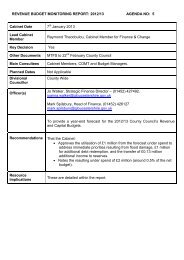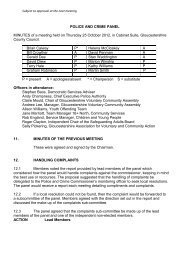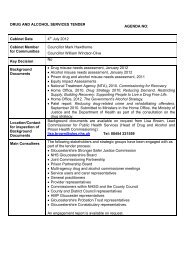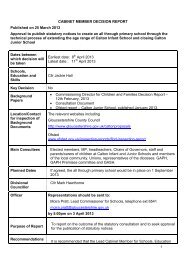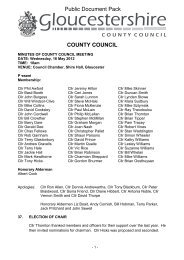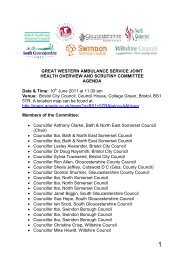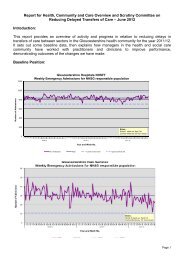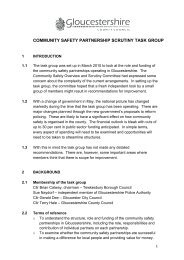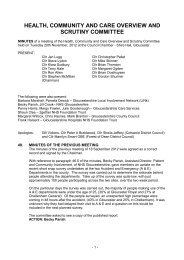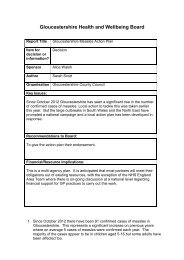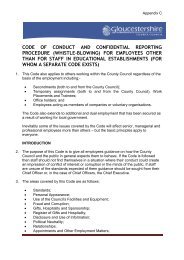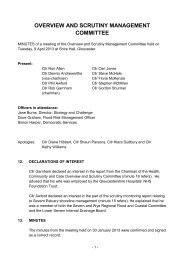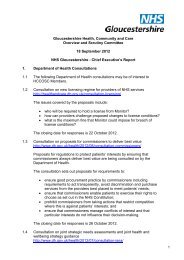Agenda item 4 - MTFS (Final) Cab 070213 , item 9. PDF 1 MB
Agenda item 4 - MTFS (Final) Cab 070213 , item 9. PDF 1 MB
Agenda item 4 - MTFS (Final) Cab 070213 , item 9. PDF 1 MB
You also want an ePaper? Increase the reach of your titles
YUMPU automatically turns print PDFs into web optimized ePapers that Google loves.
ANNEX 1.3: COMMISSIONING INTENTIONS – COMMUNITIES AND INFRASTRUCTURE<br />
Context<br />
Communities and Infrastructure covers a wide range of services and functions, including<br />
highways, transport, planning, economic development, waste, fire and rescue, trading standards,<br />
carbon reduction, police contract, community offer and libraries.<br />
Strategic Direction<br />
The strategic direction is to create greater integration between the delivery functions within the<br />
commissioning portfolio with the aim of:<br />
• Helping communities to help themselves, targeting resources where necessary and<br />
expanding the big community offer into a variety of other areas where the community has<br />
demonstrated it can deliver<br />
• Building good physical and social infrastructure that enables links between and within<br />
communities<br />
• Supporting the creation of good quality, safe and functioning places<br />
• Contributing to a strong public sector presence in localities, able to deliver services in a coordinated<br />
and effective way<br />
• Stimulating economic growth and contributing to the national recovery effort<br />
Needs Analysis<br />
The specific needs analysis varies for each area of delivery. There are 3 key areas of over-arching<br />
need that are driving change within communities and infrastructure:<br />
• Changing role of the state - through policy and legislative changes, the need for ever more<br />
active communities is crucial (e.g. big community offer, libraries).<br />
• Public sector funding reductions – redesigning services to meet statutory responsibilities<br />
(e.g. planning, trading standards, police contract, fire and rescue) and to minimise the<br />
financial risks and cost pressures faced by the Council (e.g. highways, transport, carbon<br />
reduction, waste)<br />
• Economic recovery – using all of the resources available to the Council and its partners to<br />
promote economic growth (e.g. economic development, planning)<br />
What is becoming clear is that expenditure on Communities & Infrastructure will increasingly be<br />
squeezed from two directions – firstly, the continued reduction in government funding –<br />
secondly, the upward pressure from social care, where demand is increasing. In responding<br />
there are a number of key issues that will be addressed by commissioners:<br />
• Meeting expenditure targets through the right balance of service reductions and demand<br />
management;<br />
32



